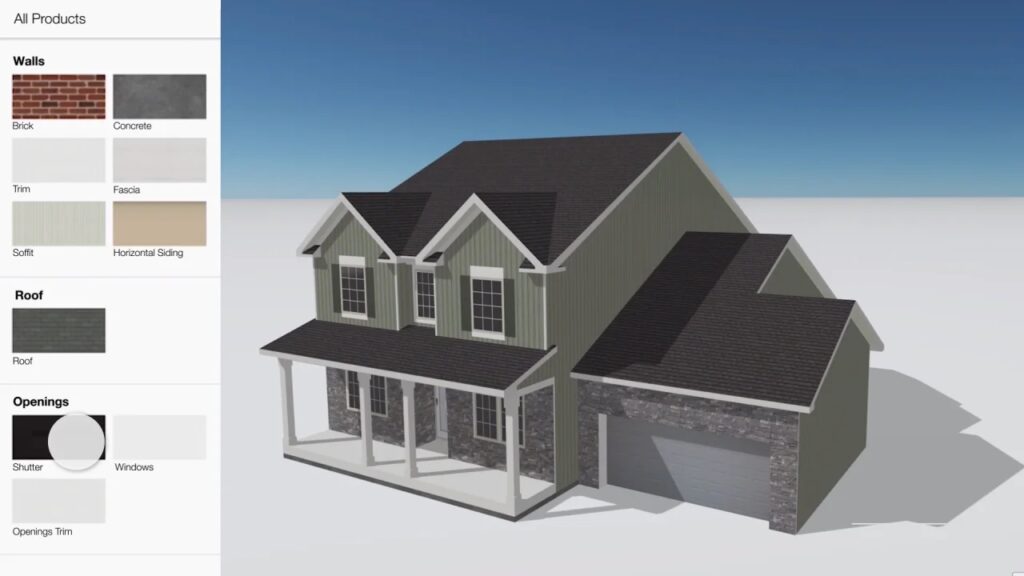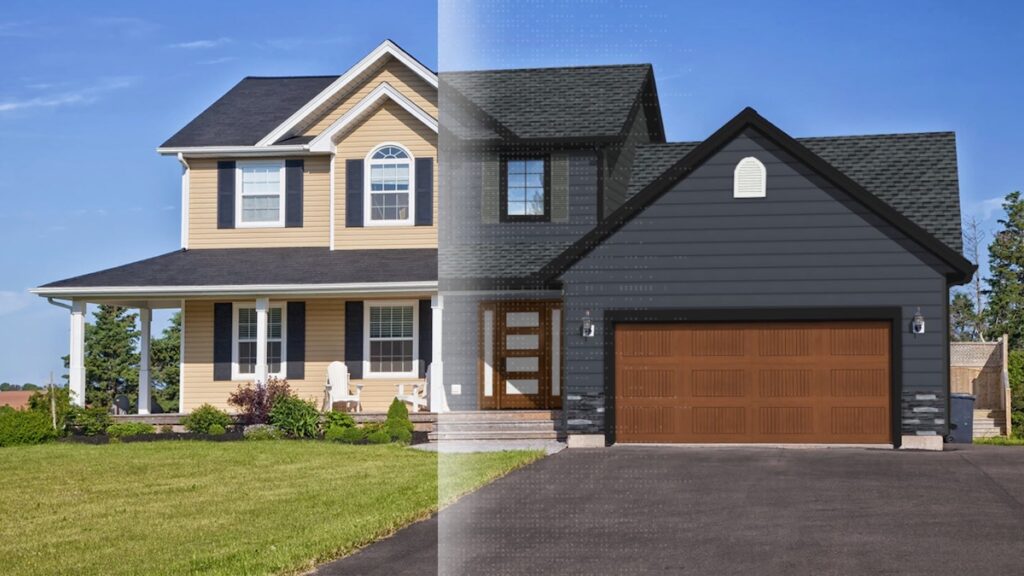TLDR
Choosing between Hover and Roomvo depends on whether you prioritize precise exterior measurement or interior product visualization.
Hover: Generates 3D models and measurements of exteriors for contractors and remodelers.
Roomvo: Specializes in interior product previews, especially flooring and walls, built to boost conversions for retailers.
Key tradeoff: Hover supports accuracy and scope for construction workflows, while Roomvo supports consumer engagement in retail settings.
Industry impact: Both tools drive efficiency, but in different parts of the value chain.
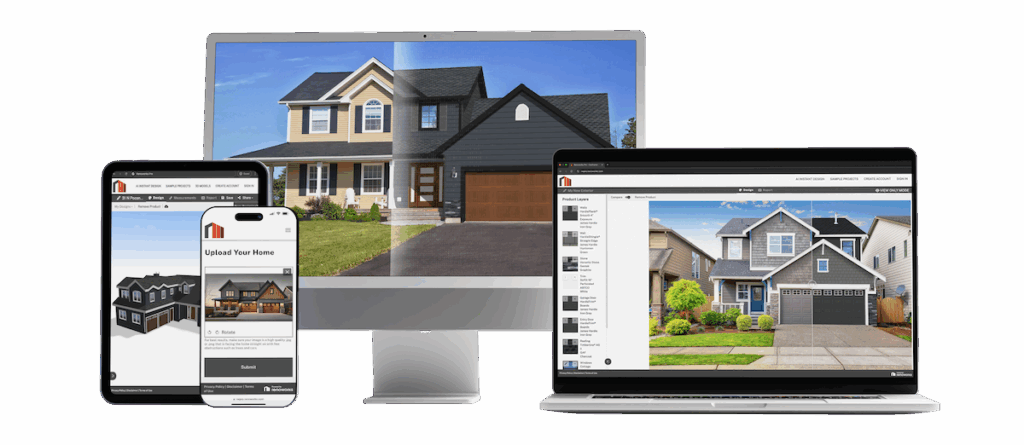
Introduction
Visualization platforms are transforming how contractors, manufacturers, and retailers connect with customers. Among the many solutions available, Hover and Roomvo often come up as leading choices. For contractors exploring a wider range of software options, our guide to the top 5 exterior design apps in 2025 highlights the platforms most widely used in remodeling today.
While both are powerful, they serve distinct purposes: Hover excels in measurement-driven exterior modeling, whereas Roomvo shines as a floor visualizer and interior product preview tool.
This article explores their strengths, tradeoffs, and industry context so decision-makers can confidently align the right platform with their business objectives.
What is Hover?
Hover is best known for turning smartphone photos into accurate 3D models of homes. Using advanced computer vision, it allows contractors to assign siding, roofing, or trim selections to realistic models while also extracting line-item measurements.
Key capabilities include:
Generation of detailed exterior measurements for estimates.
Visualization of materials directly on facades.
Integration with contractor workflows for quoting and project planning.
Functionality tailored for remodelers and insurers.
Unlike simple visualization apps, Hover provides functionality that merges visualization with measurable geometry, giving contractors reliable data for cost assessments.

What is Roomvo?
Roomvo takes a very different approach. Instead of full 3D capture, it empowers homeowners and retailers through upload-based previews. Customers can snap a photo of their interior, navigate through a retailer’s catalog, and instantly see new flooring, paint, or wallpaper applied in context.
Key capabilities include:
A floor visualizer designed for quick in-room previews.
Product syncing with manufacturer and retailer catalogs.
Embedded widgets on dealer and retailer websites.
Tools to personalize experiences for homeowners while driving conversions.
Roomvo has become particularly popular among flooring dealers who need to engage customers online and reduce hesitation at the point of purchase.
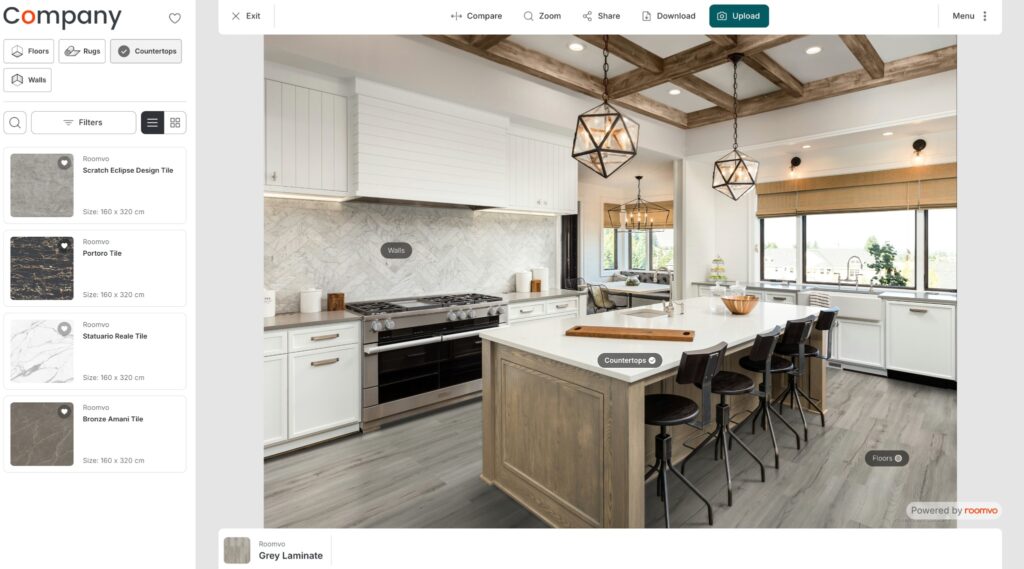
Head-to-Head: Hover vs Roomvo
1. Visualization Capabilities
Hover: Generates detailed 3D exterior renderings, allowing contractors to visualize siding, roofing, and trim.
Roomvo: Specializes in surface-level interior visualization, applying finishes like floors, wallpaper, or paint to uploaded room images.
In essence, Hover supports remodeling projects where visualization and measurement must align, while Roomvo enables quick style trials for consumer decision-making.
2. Accuracy and Measurement
Hover: Extracts measurable data directly from photos, enabling precise estimates.
Roomvo: Offers visual previews but no true measurement features.
This makes Hover indispensable for contractors but less relevant to retailers whose primary concern is selling products.
3. Integration with Business Models
Hover: Frequently used by remodelers, roofers, and insurance adjusters. Manufacturers benefit from the ability to showcase product lines with precise geometry.
Roomvo: A go-to tool for retailers and dealers, offering easy integration on their websites and syncing product catalogs from multiple sources, including PIM platforms.
Both tools create value but in very different operational contexts.
4. User Experience
Hover: Requires a learning curve. Users must capture photos carefully to generate models.
Roomvo: More consumer-friendly. A homeowner can upload a room photo, see flooring options instantly, and share on social media for feedback.
Hover supports professional workflows; Roomvo prioritizes consumer simplicity.
5. Engagement and Conversion
Industry studies show that 70% of online shoppers are more likely to purchase when they can visualize products in their space. Roomvo leans heavily into this reality, making it a website engagement tool that shortens the path to purchase.
Hover’s functionality is less about e-commerce engagement and more about contractor workflow efficiency. Yet both support the shared goal of reducing uncertainty and increasing customer trust.
6. Pricing and Access
Both Hover and Roomvo operate primarily through enterprise agreements rather than transparent pricing. Contractors report paying per project or via subscription for Hover, while Roomvo typically bills manufacturers and retailers to deploy its embedded tool.
This lack of public pricing makes direct cost comparisons difficult. The best approach is to assess ROI:
Hover saves hours of manual measurement and site visits.
Roomvo helps retailers engage customers and increase conversion rates by as much as 30%.
Industry Trends and Insights
Digital-first remodeling: Customers increasingly expect tools that let them preview options before committing.
PIM integration: Manufacturers are under pressure to keep product data synced across all channels, making sync and catalog accuracy vital.
QR code adoption: Some retailers now deploy QR cod campaigns in showrooms, linking directly to visualization experiences.
Social influence: Homeowners increasingly share visualizations on social media, turning private decisions into public conversations that impact dealer sales.
These insights reveal that visualization tools are no longer “nice-to-haves.” They are central to the way construction and retail industries compete.
Best-Fit Use Cases
Hover is best for: Contractors, remodelers, insurers, and manufacturers needing accurate measurement and exterior visualization.
Roomvo is best for: Retailers, dealers, and manufacturers looking to personalize online experiences, especially in flooring.
Each tool serves different points in the project lifecycle. Hover is upstream (estimates and modeling), while Roomvo is downstream (engagement and product choice).
HOME VISUALIZER TOOL
Still Imagining? Start Designing.
Visualize your home — for free. Instantly explore siding styles, colors, and renovations with just one photo. No forms. No pressure. Just results.
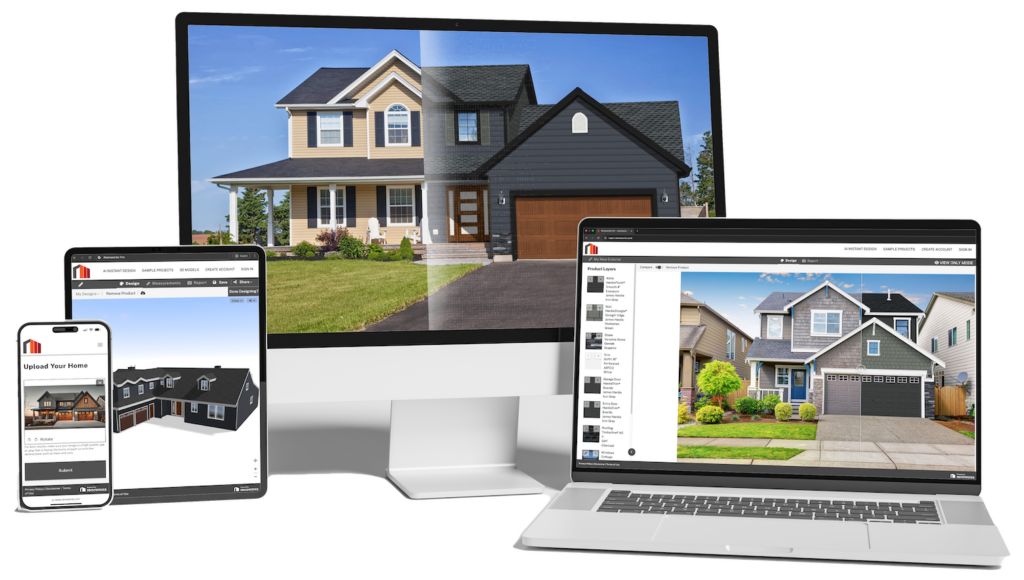
Conclusion
Hover and Roomvo both redefine how construction and retail industries interact with customers, but they solve different problems. Hover empowers contractors with precise exterior measurements and 3D models, while Roomvo engages consumers with easy-to-use interior previews.
Related Comparisons for Contractors
Choosing the right design software often comes down to comparing specific tools side by side. We’ve created detailed head-to-head breakdowns so you can see how today’s most popular platforms stack up:
Explore these comparisons to find the platform that best fits your contracting business.
FAQ
How do you use Roomvo?
Roomvo works by allowing users to upload a photo of their room. Once uploaded, they can navigate through product options from connected catalogs and instantly preview changes. Retailers often embed this tool directly into their websites.
What is Roomvo.com?
Roomvo.com is the official website for Roomvo’s visualization platform. It provides access for retailers, dealers, and manufacturers to integrate visualization experiences into customer journeys.
Is there an app to visualize flooring?
Yes. Roomvo provides a floor visualizer that applies flooring finishes to uploaded room photos. This functionality helps homeowners preview hardwood, carpet, or tile options before buying.
Who owns Roomvo?
Roomvo is owned by Leap Tools, a technology company specializing in product visualization solutions for the home improvement and retail sectors.
What is Room Visualizer?
Room Visualizer is the branded name for Roomvo’s preview tool. It allows users to see surfaces like floor finishes or wall colors directly on images of their space.
How much does Roomvo cost?
Roomvo does not publish pricing. Typically, retailers and manufacturers license the platform to embed on their websites. Costs vary depending on catalog size and deployment.
What companies use Roomvo?
Roomvo is widely used by flooring retailers, dealers, and major manufacturers to help customers preview products online and in showrooms.
Is Roomvo good for flooring?
Yes. Roomvo was originally built as a floor visualizer, making it one of the strongest solutions for flooring previews. Its functionality has since expanded to other surfaces like paint and wallpaper.
HOME VISUALIZER TOOL
Still Imagining? Start Designing.
Visualize your home — for free. Instantly explore siding styles, colors, and renovations with just one photo. No forms. No pressure. Just results.




